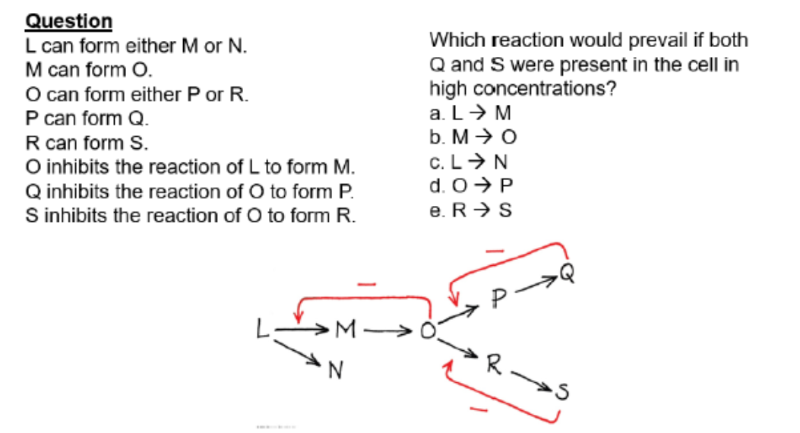안녕하세요 ^^
한국말이 서툴러서 영어로 써도 아무 문제 없습니다. 굳이 한국말로 쓰려고 노력하지 않아도되어요
저 영어 다 알아들어요 ㅎㅎ
I don't really understand what you mean when you say that the high concentration in Q inhibits O->P
: this is what its given on the questions. it says that "Q inhibits the reaction of O to form P"
It might be a form of feedback inhibition, where in the series of reaction
when an early stage enzyme’s activity ( in this case, enzyme that converts O to P ) is inhibited by the end product ( in this case, Q) . This mechanism allows cells to regulate how much of an enzyme’s end product is produced.

The feedback inhibition work like the following picture

The end product (the yellow square) works as a allosteric inhibitor that blocks the binding of the substrate (the greeb triangle) which will make the substrate accumulate. Since the first reaction is blocked, subsequent reaction would not occur, eventually not producing any end product. As End product decrease, the allostric inhibition will ease ( if it was reversible inhibition) , then the series of reaction will start again.
Back to the question,
when Q and S accumulates, it act as allosteric inhibitor of enzyme that converts O to P , O to R respectively. The accumulated O act as allostric inhibitor of enzyme that converts L to M as indicated in the question. And now, only L to N reaction is possible. So the answer is c.
답변이 되었는지요..? ^^ 열공하세용~
